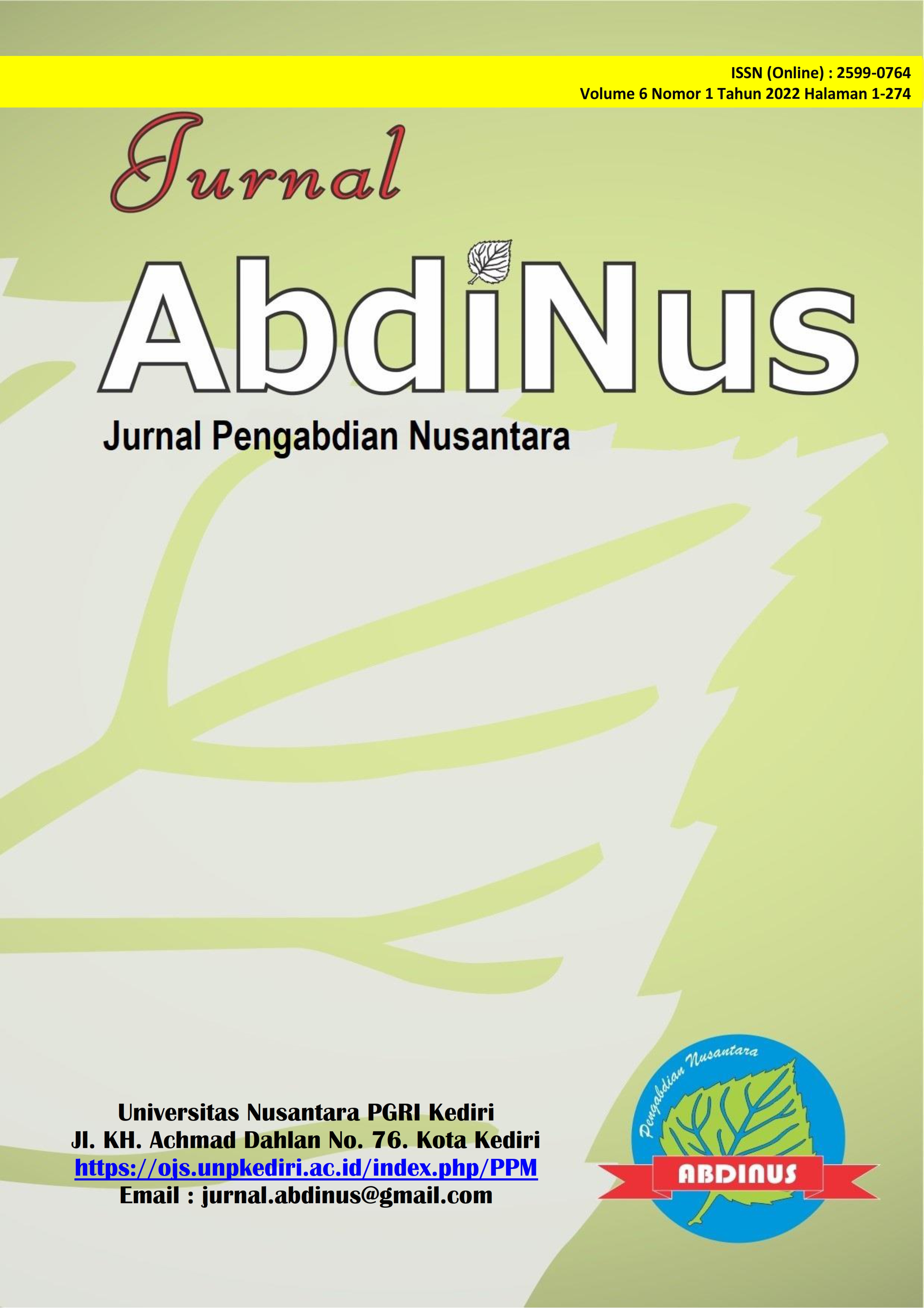Pelatihan Self Healing Untuk Mengurangi Burnout Konselor Sekolah
DOI:
https://doi.org/10.29407/ja.v6i1.16804Keywords:
Burnout, Counselor, Self healingAbstract
Training held in Community Service Stimulus Community Partnership Program (PKMS) is intended for counselors. The implementation of Self Healing is designed to reduce Burnout School Counselor, as a solution to problems faced by employees who tend to experience psychological stress, such as stress which may hinder the performance of school counselors. For that counselors and psychologists can facilitate Burnout Prospective school counselors. Organizational changes, such as restructuring and mergers, can result in higher levels of job stress and demands, such as psychological uncertainty about how the change will affect their position, role ambiguity i.e., unclear expectations. Employees indicated that one of the outcomes of psychological stress was Burnout. Burnout is a psychological process produced by work stress that is inseparable and results in emotional exhaustion, personality changes, and decreased feelings of achievement. The training activities were carried out for two days from October 09 to October 10, 2021. The training participants consisted of 20 counselors. The team evaluates the program and the results of self-healing using an instrument in the form of a scale. The scale is used as a pre-test and post-test. Based on the results of the pre-test and post-test ontraining, self-healing participants at the beginning of the activity experienced burnout in the high and medium categories, after thetreatment was carried out self-healing, based on the results of the post-test. burnout counselordecreased in the medium and low categories. It can be concluded thattraining self-healing can reduce burnout counselor.
Downloads
References
Alarcon, G. M. (2011). A meta-analysis of burnout with job demands, resources, and attitudes. Journal of Vocational Behavior. https://doi.org/10.1016/j.jvb.2011.03.007
Bakker, A. B., & Costa, P. L. (2014). Chronic job burnout and daily functioning: A theoretical analysis. Burnout Research. https://doi.org/10.1016/j.burn.2014.04.003
Dalimunthe, R. Z., & Rahmawati. (2019). Efektifitas Konseling Kelompok dengan Teknik Relaksasi Religius untuk Mengurangi Kejenuhan Belajar Mahasiswa. Jurnal Penelitian Bimbingan Dan Konseling, 4(1), 40–48.
Dubois, C. A., Bentein, K., Ben Mansour, J., Gilbert, F., & Bédard, J. L. (2013). Why some employees adopt or resist reorganization of work practices in health care: Associations between perceived loss of resources, burnout, and attitudes to change. International Journal of Environmental Research and Public Health. https://doi.org/10.3390/ijerph110100187
Fontes, F. F. (2020). Herbert J . Freudenberger and the making of burnout as a psychopathological syndrome. Memorandum: Memory and History in Psychology. https://doi.org/10.35699/1676-1669.2020.19144
Golembiewski, R. T., Boudreau, R. A., Sun, B.-C., & Luo, H. (1998). Estimates of Burnout in Public Agencies: Worldwide, How Many Employees Have Which Degrees of Burnout, and with What Consequences? Public Administration Review. https://doi.org/10.2307/976890
Halbesleben, J. R. B., & Buckley, M. R. (2004). Burnout in organizational life. Journal of Management. https://doi.org/10.1016/j.jm.2004.06.004
Khamisa, N., Oldenburg, B., Peltzer, K., & Ilic, D. (2015). Work related stress, burnout, job satisfaction and general health of nurses. International Journal of Environmental Research and Public Health. https://doi.org/10.3390/ijerph120100652
L.Anderson, D. (2017). Organization Development- The Process of Leading Organizational Change. In SAGE Publications, Inc.
Latifi, Z., Soltani, M., & Mousavi, S. (2020). Evaluation of the effectiveness of self-healing training on self-compassion, body image concern, and recovery process in patients with skin cancer. Complementary Therapies in Clinical Practice. https://doi.org/10.1016/j.ctcp.2020.101180
Mäkikangas, A., & Kinnunen, U. (2016). The person-oriented approach to burnout: A systematic review. In Burnout Research. https://doi.org/10.1016/j.burn.2015.12.002
Maslach, C., Jackson, S. E., & Leiter, M. P. (2018). Maslach Burnout Inventory Manual. In Mind Garden, Inc.
Maslach, Christina, & Leiter, M. P. (2021). How to Measure Burnout Accurately and Ethically. Harvard Business Review.
Maslach, Christine, & Leiter, Michael, P. (2016). Comprendiendo la experiencia de burnout: investigación reciente y sus implicaciones para la psiquiatría. World Psychiatry (Ed Esp).
Peterson, U., Demerouti, E., Bergström, G., Samuelsson, M., Åsberg, M., & Nygren, Å. (2008). Burnout and physical and mental health among Swedish healthcare workers. Journal of Advanced Nursing. https://doi.org/10.1111/j.1365-2648.2007.04580.x
Puleo, G. (2011). Causes and maintenance factors of employee burnout during transformational organizational change (Doctoral dissertation). In ProQuest Dissertations and Theses.
Schaufeli, W. B., Leiter, M. P., Maslach, C., & Jackson, S. E. (1996). The Maslach Burnout Inventory–General Survey. In Maslach Burnout Inventory.
Schaufeli, Wilmar B, Leiter, M. P., Maslach, C., & Jackson, S. E. (1996). The MBI-General Survey. In Maslach Burnout Inventory Manual.
Shoshan, H., & Sabine, S. (2020). The effects of employee burnout on customers: An experimental approach. Work and Stress, 34(2), 127–147. https://doi.org/10.1080/02678373.2019.1577312
Tetzlaff, E. D., Hylton, H. M., Ruth, K., Hasse, Z., & Hall, M. J. (2021). Moral distress, organizational climate, and the risk of burnout among oncology physician assistants. Journal of Clinical Oncology. https://doi.org/10.1200/jco.2021.39.15_suppl.11018
Zarean, F., & Latifi, Z. (2021). Effects of self-healing intervention on quality of life and mother-child interaction among female breadwinners. Complementary Therapies in Clinical Practice. https://doi.org/10.1016/j.ctcp.2021.101334















